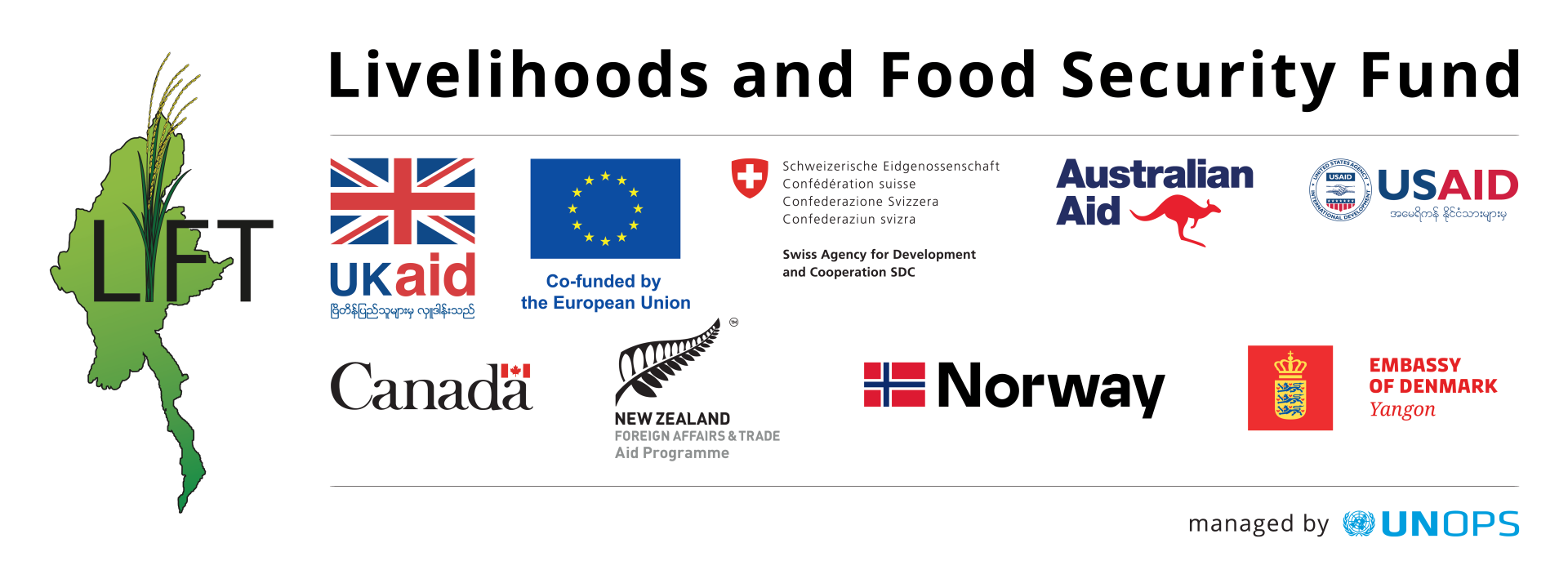
Daw Tin Hla lives with her husband and four children in Kung Laung Ye village on the banks of the Ayeyarwaddy River in Myanmar’s central Dry Zone. She and her husband, a small-scale fisherman, make their living by selling their catch on a daily basis.
Fishing has always been an unreliable source of income for the family. When the fish yield is low Daw Tin Hla often needs to take loans from private moneylenders at interest rates as high as 10% to 15% a month.
“I faced huge difficulties repaying these loans because of the high interest rates. But I did not have other choice for securing my family’s daily survival”, says Daw Tin Hla, who has been selling fish since the age of 13.
Daw Tin Hla and her husband live for half a year in makeshift tents on the sand bank, in the middle of Ayeyarwaddy River, to be closer with their only income-source. One third of her village share the same reality.
“It is easier to catch fish when we live on the sand bank” Daw Tin Hla said. “The river is our working area, and so we can work anytime. We come back when the water level rise above the sand bank during the rainy season.”
Three years ago Daw Tin Hla invested her family’s savings in a pig. She hoped to diversify her family income through pig breeding, but lost everything when the pig died of a disease.
Funded by the Livelihoods and Food Security Trust Fund (LIFT), the Thadar Consortium and Action Aid Myanmar established a Pig Bank in Daw Tin Hla’s village in November 2012. The bank is managed by the Village Development Committee and targets landless and poor households.
The project provides cheap and affordable five months loan (2% per month) to the most vulnerable villagers, who otherwise do not have access to affordable credit, to diversify their income through pig rearing. The interest and payment of principal from the project beneficiaries finance the next round of loans. The revolving fund run by the Pig Bank combines the provision of credit to villagers with a collective insurance that serves as safety net against death of pigs to disease or other unfortunate events.
“I am very lucky to take this loan, at such a low interest rate, to buy a pig. I had never imagined getting a loan with this low interest rate,” said Daw Tin Hla.
In Kung Laung Ye village, the project has already disbursed 80,000 kyats for 43 families to buy a pig each. Daw Tin Hla was able to add 28,000 kyats of family savings and bought a pig worth 108,000 kyats.
“After I bought my first pig, it got pregnant and gave birth to eight piglets. I sold the mother pig and six of her piglets, and bought a bigger pig, which is pregnant now. All this has been quite profitable (for me)”, she said.
With the profit from pig rearing, Daw Tin Hla recently paid back her loan to the Village Development Committee and also bought a fishing boat for her eldest son. She said she would not need to live on the sand bank during the upcoming dry season.
“Now we can keep the profit we make instead of paying back with most of our profits to money lenders who charge high interest rates,” she said. “Today, I have three pigs, a new boat, and no loans – I have nothing to worry about. All the villagers would also like to get a loan from Pig Bank as they have seen us profit from it.”
After all the target beneficiaries from the village have been able to access loans, the interest payments paid back to the Pig Bank will be reinvested into village development projects.
Funded by Livelihoods and Food Security Trust Fund (LIFT) this village level initiative is one of the many activities implemented by the Thadar Consortium under the “Civil Society-Led Community Based Livelihoods Resources Development in the Dry Zone” project, which covers 37 villages in 5 townships in Myanmar’s Dry Zone.


